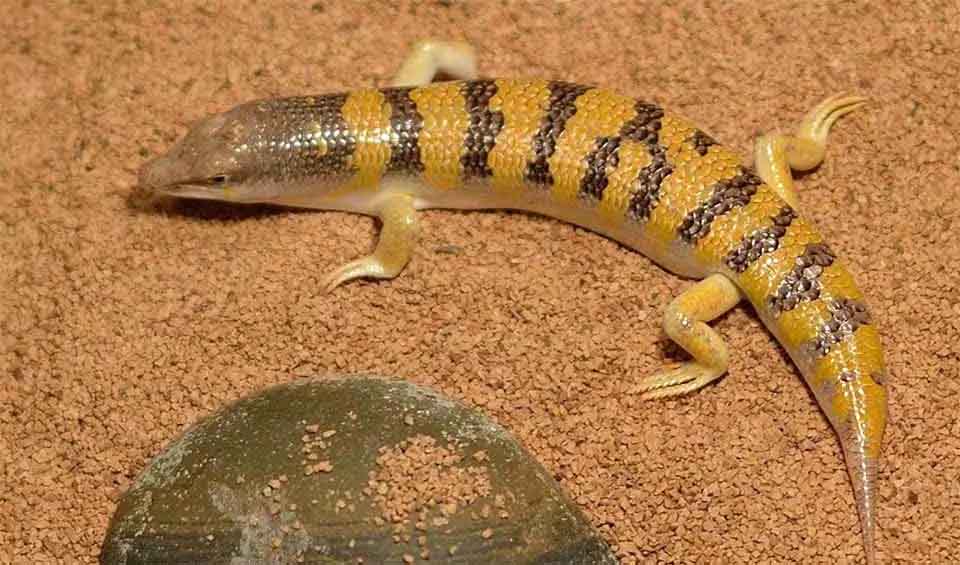Scincus – Desert skinks
Neckless lizards of the desert of Sahara and Arabia
The lizards of this particular genus are remarkable creatures, each adapted to life beneath the sand. These small, often overlooked reptiles are equipped with physical features that are a testament to their specialized lifestyle. Their limbs are reduced, yet this does not hinder them; instead, it aids in their burrowing habits, allowing them to quickly move through the sand. Their muscular and robust tails give them the necessary leverage to propel themselves beneath the desert’s surface.
An intriguing aspect of these lizards is their flat bellies, which are not merely a physical characteristic but are also functionally adapted to their subterranean existence. This unique anatomical feature plays a critical role in their respiration. Even when these lizards are buried beneath the sand, they can breathe without inhaling the sand, a remarkable adaptation that few other animals share.
Their behavior is as specialized as their bodies. These lizards use the sand not only to hunt but also as a shield against the scorching desert heat and as a hideaway from the keen eyes of predators. By burrowing, they can maintain a stable body temperature and avoid dehydration in their arid habitats. Additionally, they use this tactic to ambush prey, remaining hidden until the right moment to strike.
Observing these lizards in the wild is a rare occurrence, as they tend to lead solitary lives. Unlike some reptiles that may form groups or colonies, these lizards are typically loners, each individual establishing its own territory. This solitary nature, combined with their elusive burrowing lifestyle, makes studying them in their natural habitat quite challenging.
Species in this genus
Sandfish skink
This skink dives and ‘swims’ under the sand


